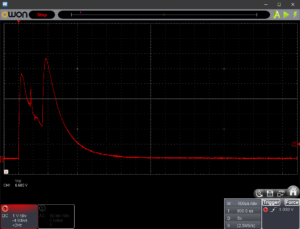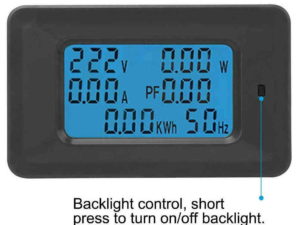This article documents a simple test to ascertain whether the current regulation dynamics of are good enough to use for testing strings of LEDs as found in much modern lighting
The APS3005S is a linear bench top power supply 0-30VDC at 0-5A with adjustable voltage and current regulation… so called constant voltage and constant current modes.
A pair of 900mm long small gauge (0.5mm^2) hook up leads were used to apply a short circuit to the power supply, and current was set to 0.1A. The resistance and inductance of these leads will to some extent limit the peak current.
The short circuit was removed and the power supply set to 30V out.
The short was reapplied and the current captured with a current probe. The current probe calibration is 1mV/10mA.
Above, the peak current is 6680*0.1=66.8A, that is 668 times the set value. Continue reading Current regulation dynamics of Atten APS3005S







